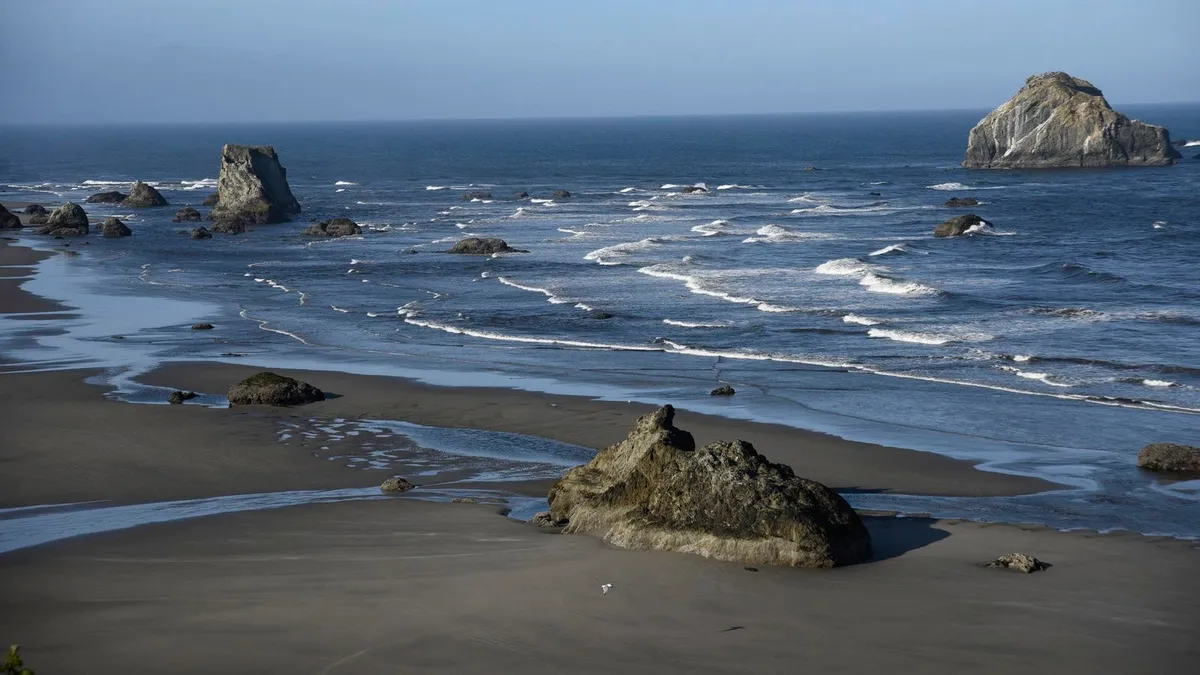
The Axial Seamount, an underwater volcano situated off the Pacific Northwest coast, is under close observation by scientists who suggest it may be preparing for an imminent eruption. This volcano last erupted in 2015, when it released several miles of lava across the seafloor. With recent seismic activity detected in the vicinity, researchers are keenly monitoring the situation.
According to experts, the potential eruption of the Axial Seamount poses no danger to those living along the Pacific Northwest coast. The University of Washington emphasizes that the volcano is located too deep and too far from shore for anyone on land to notice its eruptions. Furthermore, the underwater volcano is not connected to any seismic activity on land, meaning residents need not worry about it triggering significant events like major earthquakes or tsunamis.
The excitement among scientists regarding the Axial Seamount’s potential eruption stems from its relative predictability. The Oregon State University notes that the Axial Seamount is the most active submarine volcano in the region, with its recent eruptions occurring in 1998, 2011, and 2015. Bill Chadwick, a research associate at the university, describes it as “probably the best monitored submarine volcano in the world.”
The Axial Seamount was home to the world's first underwater volcano observatory, known as the New Millennium Observatory (NeMO), and is currently monitored by the Ocean Observatories Initiative’s extensive 300-mile Regional Cabled Array. This extensive monitoring, coupled with the frequency of eruptions and the volcano’s apparent “repetitive behavior,” makes it an ideal research site for understanding volcanic activity. Observations have indicated that the volcano inflates similarly before each eruption, allowing researchers to make forecasts months ahead of time. Such studies could enhance our understanding and prediction capabilities for volcanic eruptions worldwide.
Importantly, the Axial Seamount is located at a considerable distance from the Cascadia Subduction Zone, a megathrust fault line that has raised concerns about a potential catastrophic earthquake, often referred to as the "Big One." This fault is characterized by the subduction of one large continental plate beneath another, and scientists have been monitoring it closely. In a recent study published in the Proceedings of the National Academy of Sciences, researchers highlighted a 15% chance of an earthquake exceeding 8.0 magnitude occurring along this fault in the next 50 years.
Unlike the Axial Seamount, such an earthquake could result in severe destruction, potentially causing land along the Pacific coast to sink by over six feet. A 2022 federal and state planning exercise estimated that the ‘Big One’ could lead to approximately 14,000 fatalities, more than 100,000 injuries, and the destruction of around 620,000 buildings in the region, according to NBC News.
In their latest update, researchers from the University of Oregon reported that the Axial Seamount seems to be "just treading water" at the moment. The inflation of the volcano is progressing steadily, but the number of daily earthquakes in the underwater region has decreased significantly from over 1,000 per day in March to several hundred per day in April.
One notable aspect of the Axial Seamount is its formation by a hotspot. A hotspot refers to a region within the Earth’s mantle where plumes of hot material rise to the crust. As the crust moves over these hotspots, it can lead to the development of a chain of volcanoes, including the Axial Seamount.
The Axial Seamount is situated within the Pacific Ocean's Ring of Fire, the most volcanically and seismically active region globally. This area accounts for approximately 90% of the world's earthquakes and has witnessed 69% of all volcanic eruptions since 1960. Understanding the dynamics of the Axial Seamount within this context is essential for both scientific research and public safety.
For additional insights and updates on the Axial Seamount and its potential eruption, refer to the findings published by the University of Washington, which is continuously monitoring the situation.